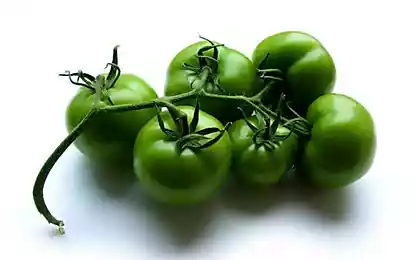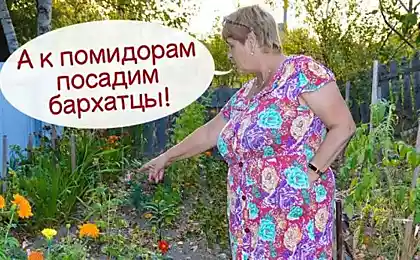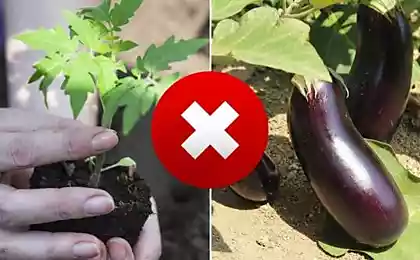165
How to prolong the life of tomatoes and harvest an excellent harvest
We used to think that tomatoes are an annual culture. At the end of August or in September, the harvest was done. We send our plants to compost or fire. Even if we do not do it ourselves, they will still nail phytofluoride and the first night frosts. But in their homeland tomatoes are perennial plants. But what if you try to extend their lives and, accordingly, harvest more crops?
If you have a heated greenhouse or winter garden, then tomatoes can be grown without transplantation for 10-11 consecutive months, that is, in an extended turnover. Then from 1 m2 you can collect 45-50 kg. Power, almost like a T-34 tank.
To get such crops of tomatoes on the "extension", it is necessary that tomato varieties, and the greenhouse itself, and the care of plants were at a height.
Suitable varieties
Modern hybrids-centenarians should be early ripe, powerful, tall, with complex resistance to disease, without a tendency to top rot. These are, for example, tomatoes F1: T-34, F1 Eupator, F1 Fan, F1 Figaro, F1 Shaganet, etc. The fruits of these varieties are glossy, bright, dense, tasty and aromatic. Even with sharp changes in soil or air moisture, these tomatoes do not crack.
Our reference
As a rule, such hybrids have a feature - a short, thin and therefore never breaking axis of inflorescence. Thanks to it, you do not need to tie every compact inflorescence, fasten with plastic clips.
All on schedule.
On seedlings, tomatoes are sown in December-January in cassettes to a depth of 1 cm. The seeds are sprinkled with a thin layer of vermiculite and covered with a transparent film of 3-5 cm to maintain high humidity of air and soil. The sprouts at 250 C break through in four to seven days.
Two weeks after sowing, the strongest and healthiest seedlings should be pecked in pots. Day and night temperatures are gradually reduced to 20-170 C. By the fifth or sixth week, pots are placed on 16-20 plants per 1 m2.
Growing seedlings should be watered moderately: it is impossible to allow drying of the soil, but also to breed a swamp is also contraindicated. It is necessary to conduct one or two fertilization with a nutrient solution in which there is calcium, but there is no nitrogen.
In the greenhouse soil, seedlings are planted at the age of 40-50 days. At this time, the plants reach a length of 20-26 cm.
Additional coverage
By mid-February and early March, the young plant blooms. For tomatoes of winter sowing, it is important that there are at least nine leaves before the first brush - this will provide flowers and fruits with proper nutrition. Without lighting, this cannot be achieved.
First harvest
At the end of April-May, the first fruits ripen. After removing one or two brushes, plants are lowered every week. During the "extension" the length of the tomato stem reaches 10 m. The harvest continues until October-early November and even (weather permitting) until December. Then the greenhouses are recooked, and the cycle repeats.
The subtleties of care
By creating a difference between day and night temperatures, plant growth can be manipulated. Relatively low night temperature and high daytime form an elongated plant. The difference should not be more than 2-30C.
If in spring the bushes have weak tops and underdeveloped roots, do not expect a good harvest in summer and autumn. If at night the thermometer drops too much, the ripening of the fruit slows down, and the filling increases. The situation can be corrected by equalizing day and night temperatures.
With the help of pinching the brush, you can influence the size of the fruits and their filling. The shorter the brush, the smaller the tomatoes, but they are larger.
The modern variety and hybrid tomato for “extension” should be:
P.S. And remember, just changing our consumption – together we change the world!
Join us on Facebook, VKontakte, Odnoklassniki
Source: vk.com/wall-65997559?offset=40&q=%23Rust_garden&w=wall-65997559_72972%2Fall
If you have a heated greenhouse or winter garden, then tomatoes can be grown without transplantation for 10-11 consecutive months, that is, in an extended turnover. Then from 1 m2 you can collect 45-50 kg. Power, almost like a T-34 tank.
To get such crops of tomatoes on the "extension", it is necessary that tomato varieties, and the greenhouse itself, and the care of plants were at a height.
Suitable varieties
Modern hybrids-centenarians should be early ripe, powerful, tall, with complex resistance to disease, without a tendency to top rot. These are, for example, tomatoes F1: T-34, F1 Eupator, F1 Fan, F1 Figaro, F1 Shaganet, etc. The fruits of these varieties are glossy, bright, dense, tasty and aromatic. Even with sharp changes in soil or air moisture, these tomatoes do not crack.
Our reference
As a rule, such hybrids have a feature - a short, thin and therefore never breaking axis of inflorescence. Thanks to it, you do not need to tie every compact inflorescence, fasten with plastic clips.
All on schedule.
On seedlings, tomatoes are sown in December-January in cassettes to a depth of 1 cm. The seeds are sprinkled with a thin layer of vermiculite and covered with a transparent film of 3-5 cm to maintain high humidity of air and soil. The sprouts at 250 C break through in four to seven days.
Two weeks after sowing, the strongest and healthiest seedlings should be pecked in pots. Day and night temperatures are gradually reduced to 20-170 C. By the fifth or sixth week, pots are placed on 16-20 plants per 1 m2.
Growing seedlings should be watered moderately: it is impossible to allow drying of the soil, but also to breed a swamp is also contraindicated. It is necessary to conduct one or two fertilization with a nutrient solution in which there is calcium, but there is no nitrogen.
In the greenhouse soil, seedlings are planted at the age of 40-50 days. At this time, the plants reach a length of 20-26 cm.
Additional coverage
By mid-February and early March, the young plant blooms. For tomatoes of winter sowing, it is important that there are at least nine leaves before the first brush - this will provide flowers and fruits with proper nutrition. Without lighting, this cannot be achieved.
First harvest
At the end of April-May, the first fruits ripen. After removing one or two brushes, plants are lowered every week. During the "extension" the length of the tomato stem reaches 10 m. The harvest continues until October-early November and even (weather permitting) until December. Then the greenhouses are recooked, and the cycle repeats.
The subtleties of care
By creating a difference between day and night temperatures, plant growth can be manipulated. Relatively low night temperature and high daytime form an elongated plant. The difference should not be more than 2-30C.
If in spring the bushes have weak tops and underdeveloped roots, do not expect a good harvest in summer and autumn. If at night the thermometer drops too much, the ripening of the fruit slows down, and the filling increases. The situation can be corrected by equalizing day and night temperatures.
With the help of pinching the brush, you can influence the size of the fruits and their filling. The shorter the brush, the smaller the tomatoes, but they are larger.
The modern variety and hybrid tomato for “extension” should be:
- high yield and hastily ripened;
- genetically resistant to diseases and pests;
- with fruits, aligned in shape and color, transportable and sunbeds; which in the brush usually do not need to be rationed;
- with short internodes, frequent location of short (with 5-7 fruits) inflorescences. published
P.S. And remember, just changing our consumption – together we change the world!
Join us on Facebook, VKontakte, Odnoklassniki
Source: vk.com/wall-65997559?offset=40&q=%23Rust_garden&w=wall-65997559_72972%2Fall




















